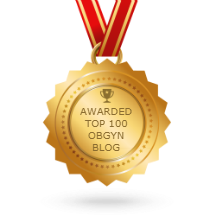What is a cold ?
A cold is an upper respiratory infection caused by one of hundreds of viruses. According to mayoclinic.org, they normally last 1-2 weeks. They normally occur a few times each year even in healthy adults. Children have them more frequently than adults, and there are usually sicker than adults with it.
Cold symptoms:
It is important that you can distinguish a garden variety common cold from something more serious. Here are the most common cold symptoms.
- Runny or stuffy nose
- Itchy or sore throat
- Cough
- Congestion
- Slight body aches or a mild headache
- Sneezing
- Watery eyes
- Low-grade fever
- Mild fatigue
Cold symptoms are caused my the immune system’s response to the virus. These responses can cause their own problems, such as excess secretions and swelling of the passageways. This combination of increased secretions and narrowed passageways can in turn can foster secondary bacterial infections in the sinuses, ear or throat. These complications require treatment.
When adults should contact the doctor:
- Fever of 103 F (39.4 C) or higher
- Fever accompanied by sweating, chills and a cough with colored phlegm
- Significantly swollen glands
- Severe sinus pain
When the doctor should be called for children:
- Fever of 100.4 F (38 C) in newborns up to 12 weeks
- Fever that rises repeatedly above 104 F (40 C) in a child of any age
- Signs of dehydration, such as urinating less often than usual
- Not drinking adequate fluids
- Fever that lasts more than 24 hours in a child younger than 2
- Fever that lasts more than three days in a child older than 2
- Vomiting or abdominal pain
- Unusual sleepiness
- Severe headache
- Stiff neck
- Difficulty breathing
- Persistent crying
- Ear pain
- Persistent cough
- Pregnant women should call for any illness, just to make their caregivers aware and to discuss pregnancy safe management options.
High fever, severe sore throat or body aches may indicate a special pathogen like influenza or strep which requires a specific treatment. Without a doubt, there is little downside to calling your doctor and asking if they think you or your chlld needs to be examined or tested.
Prevention of Colds
Cold viruses are spread by touch or particles in the air. We probably encounter them much more often than we get sick. Sometimes the immune system deals with them easily and we don’t really get sick. Getting sick happens when we encounter a particularly virulent (strong) virus, or when we are run down, or both.
Prevention is a matter of not getting run down ( easier and than done) avoiding contact with sick people or viruses. Hand washing with soap and keeping surfaces with clean with antimicrobial cleaner is critical. When my kids were growing up, we established a tradition of washing hands whenever we arrived home from elsewhere.
I also believe good oral hygiene is key to preventing upper respiratory infections. This means keeping up on the toothbrushing, flossing and dental repairs. A peroxide based mouthwash before bed is very helpful too.
Treatment of Colds
Treatment is largely supportive. This means we try to ensure that patients hydrate well and rest. We also like them to keep their nasal passages clear and cough down so they do not get secondary bacterial infections from all the congestion. This can be accomplished with over the counter decongestants and cough suppressants. (Though it is important to note that aspirin is not given to children and cough syrup is not given to children under 4. ) Better yet decongesting is accomplished with frequent steamy showers and lots of herb tea, to keep the passages clear. Good oral hygiene probably hastens healing too.
Did you know that chicken soup is actually ideal for the cold sufferer ? There is actually an old research study showing it has anti-inflammatory effects, and certainly we know it helps to hydrate and nourish. While it is hydration that is often emphasized, people recovering from a cold need at least as many calories as normal. While one should feed a cold, one should NOT “ starve a fever”.
I generally make my soup stock and my chicken soup from scratch. However that is not a quick proposition. For this reason, I like to keep some high quality canned chicken soup on hand just in case I am pressed for time and someone is under the weather. There, that is the ONE time I will recommend a “store bought, pre-made” food.
So in this case as in many, an ounce of prevention is worth a pound of cure. Stay in your exercise routine, sleep adequately, eat well, and practice good hygiene. Those things are a lot more fun than getting sick. If you do get sick, follow these measures. Treat yourself to some good soup, a steamy bath or shower, and a first rate Netflix binge.




























